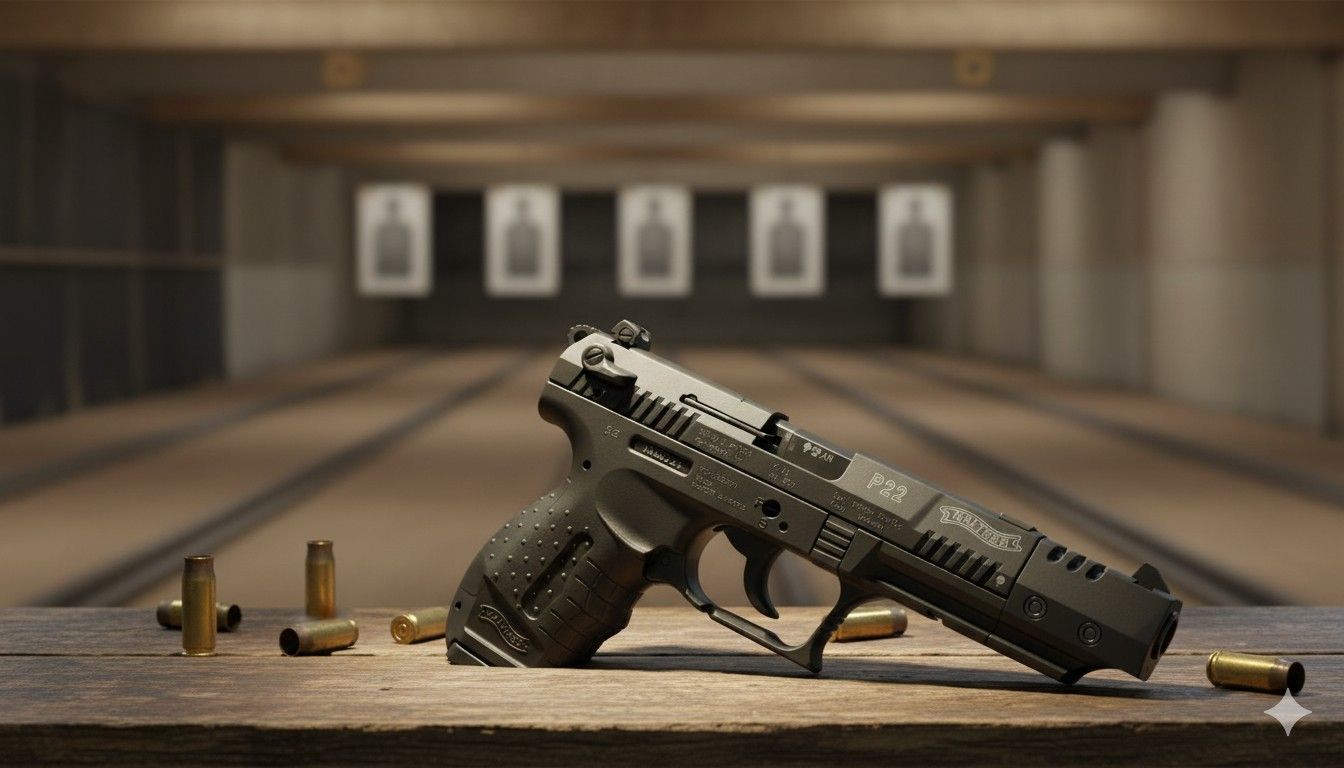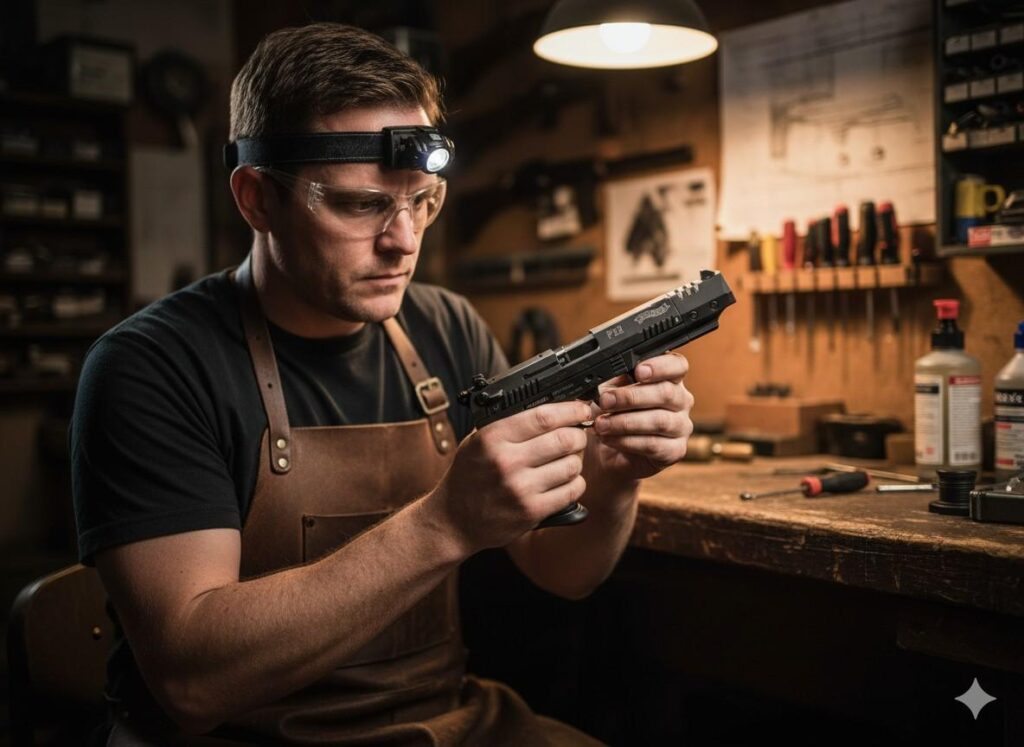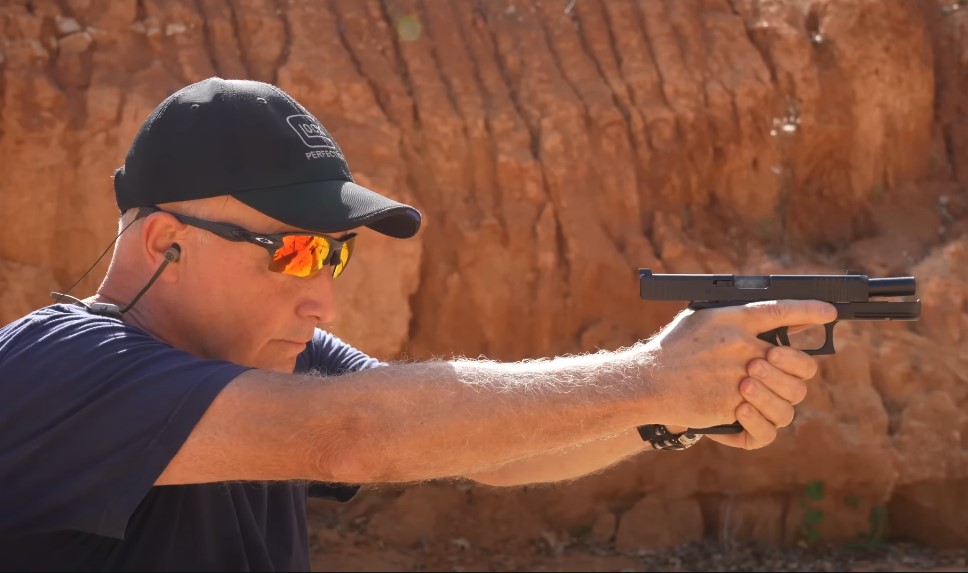Physical Address
304 North Cardinal St.
Dorchester Center, MA 02124
Physical Address
304 North Cardinal St.
Dorchester Center, MA 02124

The Walther P22 is a popular pistol known for its versatility, but like any firearm, it isn’t without its quirks.
If you’ve been facing Walther P22 problems, don’t worry! We’ve got you covered with easy fixes to keep your pistol running smoothly.
From jamming issues to trigger troubles, learn how to troubleshoot like a pro.Let’s get your P22 running smoothly again. Here are the most frequently reported problems and how to resolve them.
The Walther P22 can sometimes face issues like jamming, misfires, or trigger stiffness.
These problems are often caused by ammunition type, improper cleaning, or worn-out parts.
Stay proactive by using high-quality ammo, regularly cleaning the pistol, and inspecting for wear. A little maintenance goes a long way!

Causes:
This issue is often caused by a rough or poorly angled feed ramp, which prevents the cartridge from sliding smoothly into the chamber.
Weak magazine springs or using the wrong type of ammunition can also contribute to feeding problems.
Sometimes, a dirty pistol is all it takes to cause a jam.
Fixes:
Start by giving your P22 a thorough cleaning, paying special attention to the feed ramp.
You can gently polish the feed ramp with a Dremel tool and a felt polishing tip to create a smoother surface.
Also, ensure you are using high-velocity, round-nose ammunition, as the P22 is known to be picky.
Read Also: 10 Common Glock 20 Gen 5 Problems (With Easy Fixes)

Causes:
The primary cause of FTEs in the P22 is often a weak or worn-out extractor, which can’t get a good grip on the rim of the casing.
A dirty chamber or a weak recoil spring can also prevent the slide from cycling with enough force to eject the spent shell properly.
Fixes:
First, inspect and clean the extractor and the area around it. If it appears worn or damaged, replacing the extractor is a simple and inexpensive fix.
You might also consider upgrading to a stronger, aftermarket recoil spring, which can provide the necessary force for reliable cycling.
Causes:
This is commonly caused by a weak hammer spring or a dirty firing pin channel, which can slow the firing pin’s movement.
In some cases, the firing pin itself may be worn or damaged. Using ammunition with particularly hard primers can also lead to this issue.
Fixes:
Begin by cleaning the firing pin channel thoroughly to remove any gunk or debris.
If the problem persists, consider installing a stronger aftermarket hammer spring to increase the striking force.
It’s also wise to stick with ammunition brands known to have softer primers, such as CCI Mini-Mags.
Causes:
The original P22 slides were made from a zinc alloy, which is not as durable as steel.
Over time, the repeated stress of firing, especially with high-velocity ammunition, can cause fatigue and lead to cracks.
This issue is more prevalent in pre-2009 models.
Fixes:
If your slide is cracked, stop using the pistol immediately. Contact Walther’s customer service.
They are aware of this issue and have been known to replace cracked slides, often with the newer, more durable steel-reinforced version.
Regularly inspect your slide for any signs of hairline fractures.
Causes:
The design of the slide lock mechanism puts direct pressure on the plastic follower after the last round is fired.
This constant metal-on-plastic contact gradually wears down the follower, which can eventually lead to the slide not locking back on an empty magazine.
Fixes:
You can temporarily fix this by lightly sanding the worn area of the follower to create a smoother surface.
However, the best long-term solution is to replace the stock followers with aftermarket metal ones.
These are much more durable and will prevent the issue from recurring.
Causes:
The vibrations from firing can cause the barrel nut to slowly unscrew.
This is a common issue because the nut is not designed with a strong locking mechanism from the factory.
An improperly seated barrel can also exacerbate this problem.
Fixes:
The easiest fix is to apply a small amount of non-permanent, medium-strength thread locker (like blue Loctite) to the threads of the barrel nut before tightening it with the provided wrench.
This will hold it securely in place while still allowing you to remove it for cleaning when needed.
Causes:
The design requires a specific sequence of actions that can be non-intuitive.
The recoil spring guide rod must be perfectly aligned, and the takedown lever can be stiff and difficult to manipulate, especially on newer pistols.
Fixes:
Patience and practice are key. Watch several online video tutorials to fully understand the process.
When reassembling, make sure the recoil spring is seated correctly on the barrel.
Applying a small amount of gun oil to the takedown lever can also make it easier to operate.
Causes:
This issue almost always stems from incorrect reassembly.
If the trigger bar spring is not placed properly or if the trigger bar itself is not aligned with the sear, it can pop out of place when the slide is reinstalled.
Fixes:
If you experience a dead trigger, disassemble the pistol again.
Carefully inspect the trigger bar and its spring, ensuring they are correctly positioned according to the owner’s manual or a reliable takedown guide.
It may take a few tries to get it right.
Causes:
The P22 was designed to function best with high-velocity .22 LR ammunition.
Standard or subsonic velocity rounds often don’t generate enough energy to cycle the slide reliably.
Ammunition with waxy coatings can also gum up the action, causing malfunctions.
Fixes:
Stick to high-quality, high-velocity (at least 1,200 feet per second) round-nose ammunition.
CCI Mini-Mags are widely considered the gold standard for the P22.
Experiment with a few different brands of high-velocity ammo to see what your specific pistol prefers.
Causes:
This problem is almost always related to the magazine.
As mentioned earlier, a worn-out plastic magazine follower is the most common culprit.
A weak magazine spring that can’t push the follower up with enough force to engage the slide stop can also be the cause.
Fixes:
First, try a different magazine to see if the problem is isolated to one. If the issue persists across magazines, inspect the followers for wear.
Upgrading to aftermarket metal followers is the most reliable solution.
You can also try stretching the magazine spring slightly to increase its tension as a temporary fix.
By addressing these common issues, you can turn a sometimes-frustrating pistol into a reliable and enjoyable shooter.
Most of these fixes are simple, inexpensive, and can be done at home with basic tools.
Regular cleaning, using the right ammunition, and making a few strategic upgrades will make all the difference in the performance of your Walther P22.
The Walther P22 performs best with high-velocity (1200+ FPS) .22 LR round-nose ammunition. CCI Mini-Mags are highly recommended and considered the most reliable choice for this pistol.
It’s a good practice to clean your P22 after every shooting session, or at least every 200-300 rounds. The .22 LR ammunition is notoriously dirty, and regular cleaning will prevent many common malfunctions.
Yes, when used correctly and properly maintained. However, owners of older models (pre-2009) should regularly inspect the slide for cracks, as this was a known safety issue that has since been addressed by Walther.